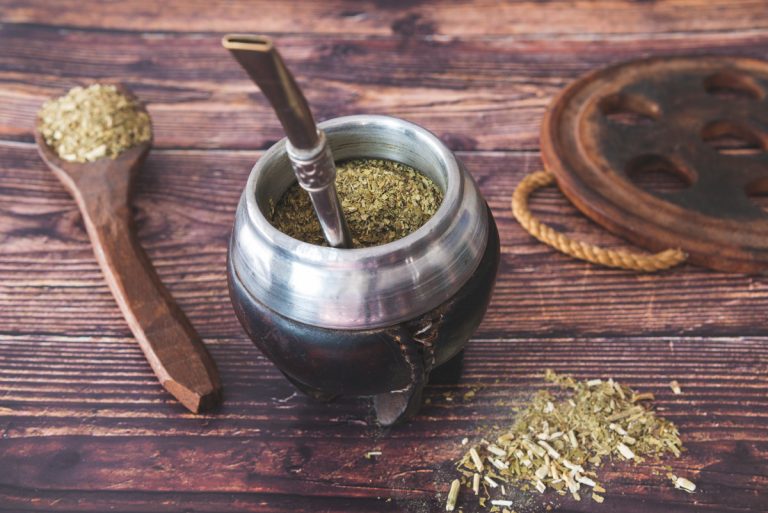Green and with an unmistakable aroma, yerba mate (Ilex paraguariensis) has been used for producing beverages for a long time.
Harvested from a tree native to South America, Guarani people consumed it well before the arrival of Europeans. Historians often point to the thesis that consumption of the herb was probably originally intended to disguise the unpleasant taste of brackish water.
Researchers claim that the first contact Europeans had with the herb was on the banks of the Paraná River in the 16th century.
Table of Contents
The Legend of Yerba Mate
This plant is closely linked to the Guarani people, so there are countless legends involving the plant.
One of them tells the story that a Guarani warrior was sad because he was already too old to fight and his only consolation was his daughter, Yari, who had refused many marriage proposals to take better care of her father.
One day, a strange traveler came to the house of the old Guarani with exotic clothes and blue eyes. Yari and her father were hospitable, sang to the traveler, and offered him their best meals. The next day, the grateful traveler revealed himself to be a messenger of the God Tupã (the great creator God), to repay them for their kindness, he would fulfill any wish they had.
The elder then asked for the strength of youth to be restored to him. This way, his daughter would be free to marry.
The messenger gave the old man the leaves of the Caá plant and taught him how to grow it and to prepare an infusion with it. So the elder began to sip the beautiful leaf, and through the new hot and bitter drink, he could recover his strength and accompany his tribe on new wanderings.
The new beverage also became a symbol of friendship among the warriors and comforted them in sad and lonely times.
A Brief History of Yerba Mate
The first to use yerba mate was the Guarani people, who inhabited the region defined by the basins of the Paraná, Paraguay, and Uruguay Rivers at the time of the arrival of the Spanish colonists.
With the scientific name Ilex paraguariensis, the French botanist Auguste de Saint Hilaire named it in 1822.
The native yerba mate tree reaches an average height of 4 to 6 meters, reaching more than 15 meters in some conditions. Studies point out that the natural occurrence of the plant restricted to 3 countries: Brazil, Argentina, and Paraguay.
The use of this plant as a tonic and stimulant drink was known by the aborigines of South America since the beginning of the Spanish and Portuguese colonization, before commercialization by the Jesuits from 1610.
Without knowing its stimulating qualities, the Jesuits falsely believed it was an intoxicating plant and prohibited its use in Brazil during the 16th century, calling it the “devil’s herb”. However, they later advocated for its use because they found that it helped increase productivity within the local population.
In the 18th century, there were already records of the herb being used for economic purposes. At this time, the Portuguese government became interested in this activity.
In the following century the so-called yerba mate cycle gained strength through processing yerba mate in mills.
The culture and commercialization of yerba mate was extremely important in the urbanization and development of the various cities in the southern region of South America.
Due to the 1929 crisis and the modernization of crops, the yerba mate cycle, along with all its luxury, came to an end. However, today the herb is still produced by family farmers, who keep the tradition alive.
Conclusion
With all its history and social importance, yerba mate has gained a place of respect among cultures crucial to the development of the South American continent.
For centuries it has been a plant used among native populations, a habit quickly adopted by colonizers and perpetuated until today among a large part of the population of the places where the plant naturally grows.
Full of legends and specific rituals, yerba mate had and still has great importance for several regions of Argentina, Brazil, Paraguay, and Uruguay.

